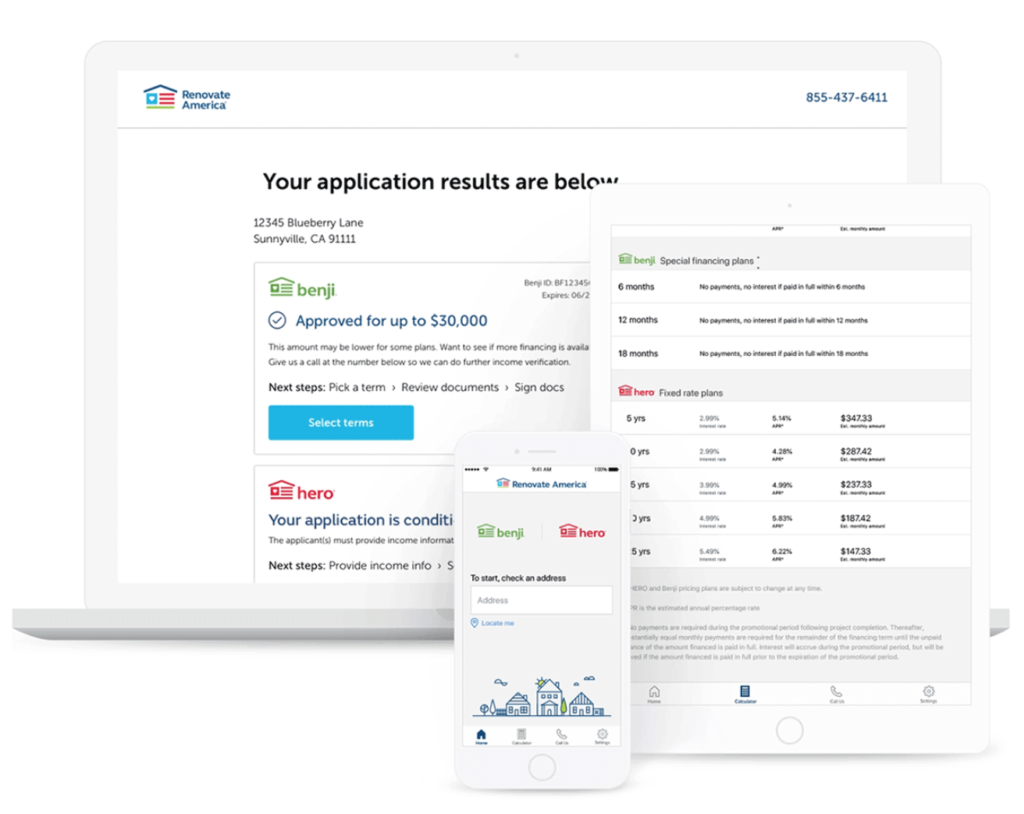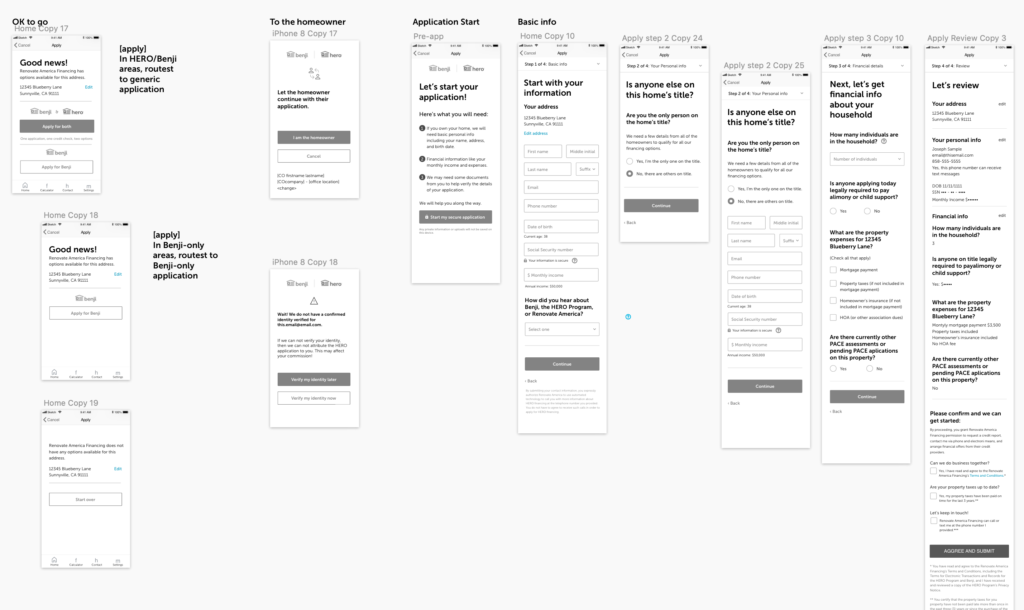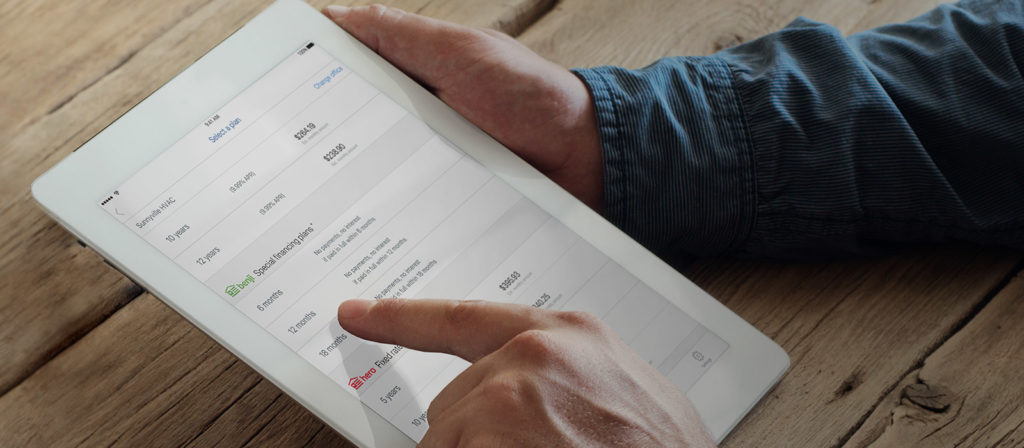Spring 2018
Problem
While sales were sagging, some promising market analysis revealed that Renovate America’s PACE financing option, HERO, could benefit from being sold alongside the company’s unsecured financing option, Benji, as a viable alternative for some home improvement customers. This created additional challenges:
- Requiring customers to fill out multiple forms (boring)
- Triggering two separate credit report inquiries (lame)
The company needed to increase the likelihood of converting every sale possible without creating obstacles to accessing credit and while assuring a high bar for customer protection.
Oh… and we only had a few weeks to work out the design because it had to be live in market in under one quarter.
Solution
Renovate America needed a single credit application form that could provide multiple financing results.
Having multiple financing options gives an applicant the power to select the financing plan for their home improvement project that makes the most sense for them. For contractors, it’s a more reliable set of options and improved likelihood of closing sales.

To accomplish this, customers now needed to accomplish two key tasks:
- Estimate monthly payments associated with any financing option available at a specific location
- Apply for all financing options using only one application form and rendering only one credit report inquiry
The team examined the opportunity to augment an existing mobile app that had been designed only for the company’s unsecured financing product, Benji.
The new mobile app would take a generic direction, designed to provide all available financing options in all scenarios.
Getting back to not-so-basics…
First order of business, get back to basics: understanding who the app is for, when they’re suing it, and what they want to achieve.
The app would be used by home improvement salespeople to close the financing component of their project sales pitch. Typically, the contractor has estimated the project, defined the cost, then transitions the conversation to payment, and often financing.
The rub? The homeowner is also a user; they’re the one filling out the application form, dealing with results, and ultimately confirming that they will move forward with the deal. So we had to address this experience as a dual-user mobile app.
Every interaction, decision point, and message, and interaction had to be evaluated against those two audiences, each with their own limitations and challenges.
Making it happen
We kept work at an intentionally low fidelity while working out the dual application workflow and calculator activity.

Working across two dev teams, one for the credit application and one for the dual-result calculator, the low fidelity wireframe proved invaluable at first. We’d walk through the workflow and make edits together, essentially pair designing with members of our development team.
First, the team improved the pricing calculator in the app to show all Benji and HERO payment options for a given project cost.
Note: Visual Design for this app by David Defenbaugh
The two forms of financing are not only structured differently, but repaid differently, posing a significant design challenge for presenting them as comparable options. The team worked through nuanced set of inputs and controls, ultimately arriving at a simple and powerful tool for calculating payment amounts.
Then, the team worked through the application itself. While the initial intake form for the credit application is relatively simple, the variety of error messages and validation scenarios facing two totally different and complex forms of financing is enough to make the team’s collective head spin.
The application was branded OneApp and refined to provide clear transactional pathways for the customers while keeping sensitive information secure.

Ultimately, as the framework became clear, we moved into narrowing in on the presentation of key content and interactions. My colleague David Defenbaugh took ownership of the prototype, bringing the workflow to life and merging in his visual design over the bones of the IA.
You can examine multiple use scenarios by trying the prototype »
The app went live to acclaim from our home improvement customers and early data suggests that contractors were expanding their business with Renovate America, as we saw repeat usage grow and Q/Q volume improve among customers who used the app.
The real app (iTunes, Play Store) only works with an active login credential.
Team
- Product Lead: Cartic Natraj
- Engineering Leads: Christopher Robinson, Quentin de Bruyn, & more
- UX Lead: David Panarelli
- Visual Design: David Defenbaugh
